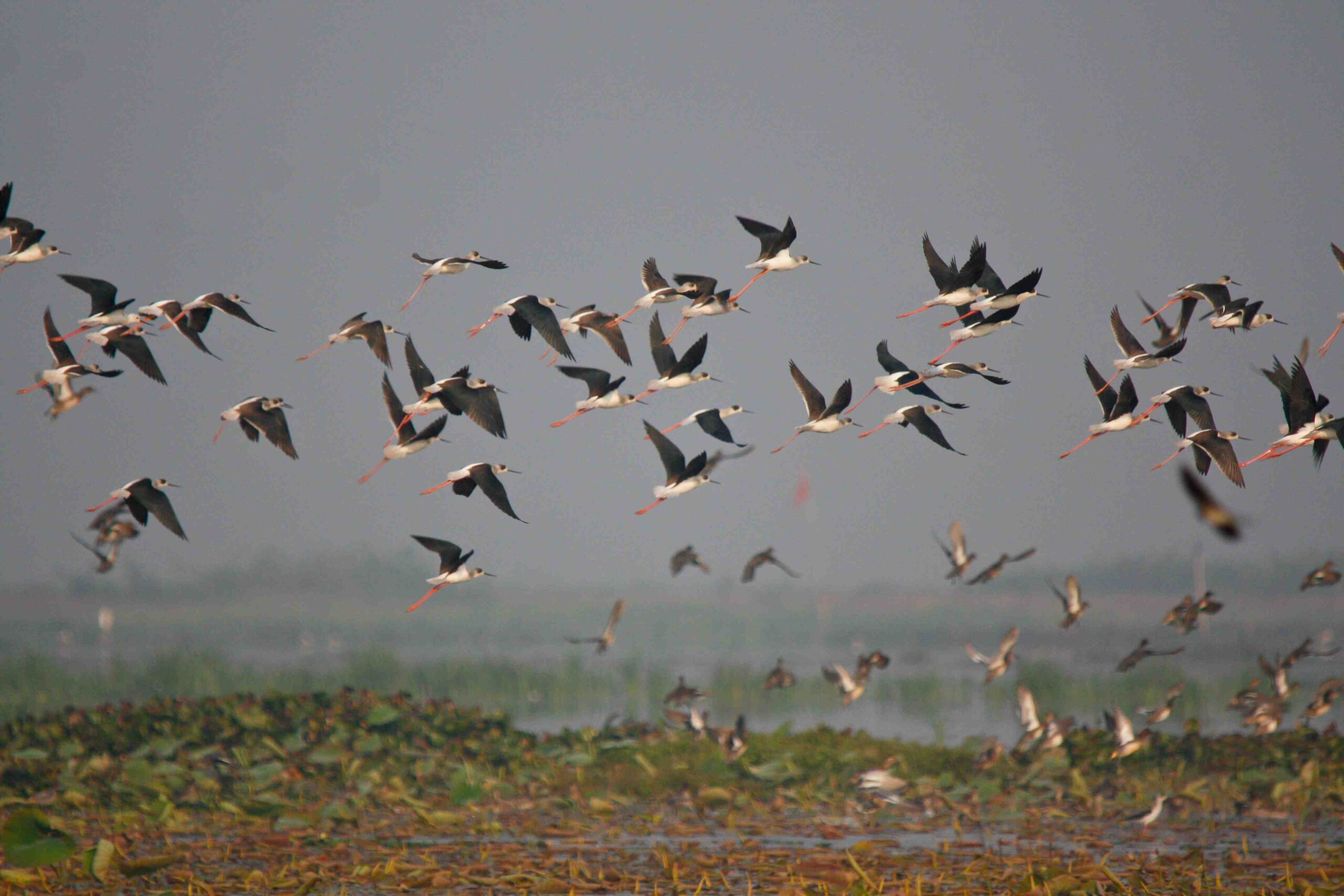Cape May, New Jersey: Each spring, an extraordinary natural event unfolds along the Delaware Bay. Horseshoe crabs lay their eggs under the light of May’s full moon, attracting hundreds of thousands of migratory birds that stop to refuel on their journeys. This ecological phenomenon is also a treasure trove for scientists racing to predict and prevent the next flu pandemic.
Researchers from St. Jude Children’s Research Hospital, led by virologist Dr. Pamela McKenzie and her team, have been collecting bird guano at this site for nearly four decades. The fecal samples, rich in influenza viruses, provide critical insights into how flu strains evolve and spread globally.
A History of Tracking Influenza
The project began in 1985 under the guidance of Dr. Robert Webster, the first to identify that flu viruses originate in the intestinal tracts of birds. His groundbreaking discovery revealed that birds shed these viruses in their feces, which then spread through water.
The Delaware Bay’s strategic location along the Atlantic flyway makes it an ideal site for tracking the movement of flu strains. In their initial year, the team found influenza viruses in 20% of the samples they collected, laying the groundwork for what has become one of the longest-running influenza surveillance projects globally.
The Threat of H5N1
Today, the urgency of this work has escalated. The highly pathogenic avian influenza (HPAI) virus H5N1 has devastated poultry farms and, for the first time, infected dairy cattle in the U.S. This alarming development has raised concerns about the virus adapting to spread more efficiently among humans.
H5N1 infections in humans have so far been limited, as the virus struggles to bind to human respiratory cells. However, a recent study published in Science suggests that a single genetic mutation could enable H5N1 to spread more easily between people, amplifying its pandemic potential.
Sampling the Front Lines
During their latest fieldwork in Cape May, McKenzie and her colleague Patrick Seiler meticulously collected bird guano samples. While no H5N1 viruses were detected in the area’s migratory birds, the team remains vigilant, sequencing the genetic codes of all flu viruses they find and uploading them to an international database.
Their efforts recently expanded to northern Alberta, Canada, and northwest Tennessee, where they detected the D1.1 genotype of H5N1 in ducks. This newer strain has been linked to severe human infections in Vancouver and Louisiana, marking a troubling development in the virus’s evolution.
An Ongoing Battle
Wild birds have become a persistent reservoir for H5N1, complicating containment efforts. A study led by Dr. Louise Moncla from the University of Pennsylvania found that the virus’s spread in North America is driven by multiple introductions from migratory waterfowl.
Despite aggressive culling of infected flocks, wild birds continue to reintroduce the virus into farmed and backyard populations. Surveillance of these birds is now seen as critical for preventing future outbreaks.
Preparing for the Unknown
As May approaches, the St. Jude team plans to return to Delaware Bay, resuming their crucial work under the glow of the full moon. Their mission remains the same: to monitor, study, and understand flu viruses before they have the chance to ignite a global health crisis.
“The shorebirds are moving viruses across long distances,” said Dr. Lisa Kercher, the team’s lab director. “If the H5N1 virus ever evolves to spread easily among people, we’ll be watching—and hopefully ready.




